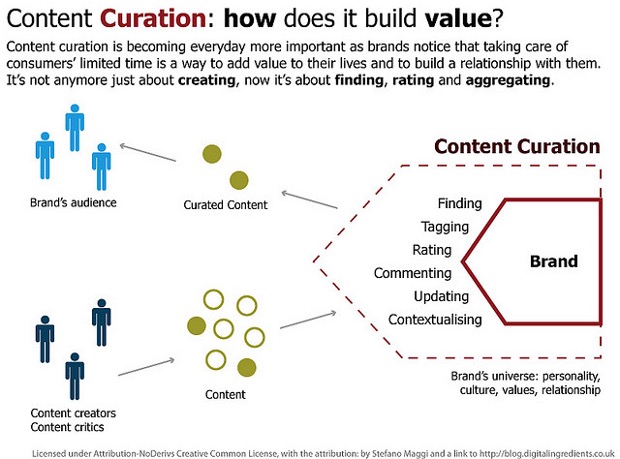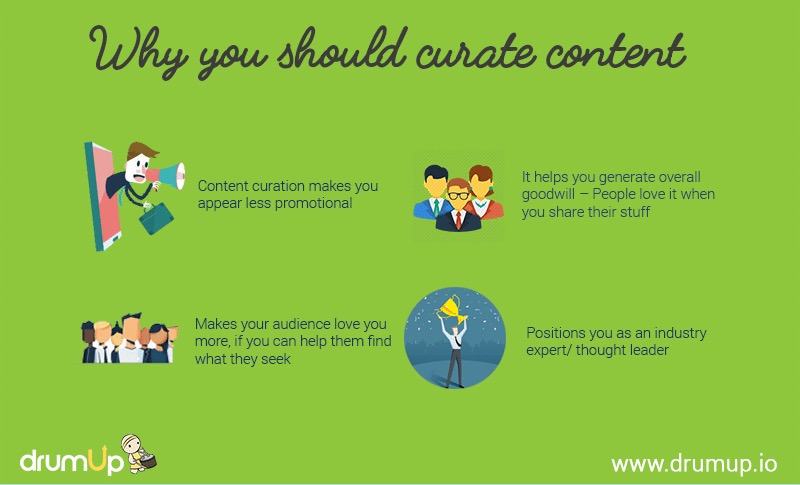When it comes to using content curation on social media, the saying “everyone is doing it” is actually true. According to curation giant Curata, best-in-class marketers use a content marketing mix of 65% created content and 25% curated content, and nearly every business is doing some kind of curation. In fact, the company’s benchmark back in 2014 showed that only 5% of businesses didn’t use curation tactics. So if curation is a basic need for marketing – why isn’t every company using it to its full potential?
Many brands use content curation on their owned and operated websites and blogs to promote industry news stories, but social media is the marketing platform where curation happens most. Social media content curation takes place when a marketer filters through all of the interesting content online and shares the best news, video, images, etc. he/she finds online on a company’s social networks.
As Rohit Barghava writes in the Content Curation Manifesto, marketers who curate content “will bring more utility and order to the social web. In doing so, they will help to add a voice and point of view to organizations and companies that can connect them with customers – creating an entirely new dialogue based on valued content rather than just brand created marketing messages.”
The benefits of content curation
Beyond the value content curation offers your customers, it can also benefit your brand. When customers view you as a leader in the industry, they’re more likely to purchase your products and services. B2C brands can use their curated content on social networks such as Pinterest and Instagram to earn new followers and showcase their personalities with viral-worthy posts. Great marketers add a piece of their own brand on the articles and images they share with comments, CTAs or links back to their own company sites. See the image above from Curata as an example.
Getting the right balance between content curation & creation
Well-curated content attracts readers and often generate a lot of social interactions such as likes and retweets. Within your social media strategy, you should plan to include that magic 65/35 curated content/owned content split.
But don’t plan to manually sift through content yourself if you can help it; the research could take hours. Identify top blogs, influencers and individuals to follow. Monitor RSS feeds of relevant sites, and ensure your greater team is involved in screening content for relevance and value. Place curated content alongside your created content on a content calendar. That way, you can enjoy an overview of your curated/created content distribution ratio and track if you have focused on central theme enough.





